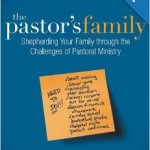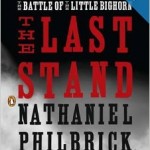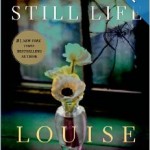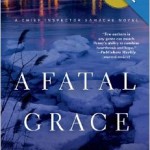I love to read. By God’s grace I am a pretty fast reader; I usually read a couple books each week. I find it helpful to summarize my thoughts on each book and I offer those thoughts in the hope that you will be encouraged to either read or pass over the given title.
 Kingdom Come: The Amillennial Alternative by Sam Storms. This surely is now the “go to” resource for amillennialism. Storms was trained in classic dispensationalism and the book represents a few decades worth of study, so he is uniquely equipped to deal with the pertinent content. In over 500 pages he covers everything from escatological hermeneutics to systematic strengths/weaknesses of the various positions to exegesis of the disputed texts. Storms writes winsomely and clearly, thus the book steers clear of the dry, academic treatment one usually finds in this debate. If Kingdome Come doesn’t convince you of the amillinnial position it will at least give you the best representative study you can find. Of particular help are his chapters “Problems with Premillinnalism” and “A Cumulative Case Argument for Amillennialism.”
Kingdom Come: The Amillennial Alternative by Sam Storms. This surely is now the “go to” resource for amillennialism. Storms was trained in classic dispensationalism and the book represents a few decades worth of study, so he is uniquely equipped to deal with the pertinent content. In over 500 pages he covers everything from escatological hermeneutics to systematic strengths/weaknesses of the various positions to exegesis of the disputed texts. Storms writes winsomely and clearly, thus the book steers clear of the dry, academic treatment one usually finds in this debate. If Kingdome Come doesn’t convince you of the amillinnial position it will at least give you the best representative study you can find. Of particular help are his chapters “Problems with Premillinnalism” and “A Cumulative Case Argument for Amillennialism.”
 The Pastor’s Family: Shepherding Your Family through the Challenges of Pastoral Ministry by Brian & Cara Croft. Croft is the curator of the popular practicalshepherding.com and I was pleased to see his wisdom make its way into print with The Pastor’s Family. The strength of this book is the written interplay between Brian and Cara. At appropriate points in Brian’s chapters Cara will offer up a paragraph or two on perspective from a pastor’s wife (and vice versa on Cara’s chapters). For me, Part Two – “The Pastor’s Wife: ‘I Don’t Recall Saying ‘I Do’ To This!” – is the strongest part of the book. Few available resources today specifically address the impact of ministry on the pastor’s wife, and this one does it wonderfully. The book would serve any family involved in pastoral ministry, but I can see it being uniquely helpful to younger couples just about to start in ministry. Well done!
The Pastor’s Family: Shepherding Your Family through the Challenges of Pastoral Ministry by Brian & Cara Croft. Croft is the curator of the popular practicalshepherding.com and I was pleased to see his wisdom make its way into print with The Pastor’s Family. The strength of this book is the written interplay between Brian and Cara. At appropriate points in Brian’s chapters Cara will offer up a paragraph or two on perspective from a pastor’s wife (and vice versa on Cara’s chapters). For me, Part Two – “The Pastor’s Wife: ‘I Don’t Recall Saying ‘I Do’ To This!” – is the strongest part of the book. Few available resources today specifically address the impact of ministry on the pastor’s wife, and this one does it wonderfully. The book would serve any family involved in pastoral ministry, but I can see it being uniquely helpful to younger couples just about to start in ministry. Well done!
 The Last Stand: Custer, Sitting Bull, and the Battle of Little Bighorn by Nathaniel Philbrick. I have been hooked on Philbrick ever since reading Mayflower, so I was eager to read his latest on Custer’s last stand. In all my history reading I have never studied much related to the 1870s, the decade with which this book is preoccupied. Although he does dip into military strategy and requisite battle speculation, Philbrick concentrates on Little Bighorn’s principal characters: Custer and Sitting Bull. And what fascinating characters these men were! Philbrick builds their stories to a point that when the battle begins the reader has a deep understanding of the opposing generals. Woven into this work is sober reflection on the decline of life for Native Americans and the government that precipitated it. An excellent introduction to such a small, yet significant battle in our nation’s history.
The Last Stand: Custer, Sitting Bull, and the Battle of Little Bighorn by Nathaniel Philbrick. I have been hooked on Philbrick ever since reading Mayflower, so I was eager to read his latest on Custer’s last stand. In all my history reading I have never studied much related to the 1870s, the decade with which this book is preoccupied. Although he does dip into military strategy and requisite battle speculation, Philbrick concentrates on Little Bighorn’s principal characters: Custer and Sitting Bull. And what fascinating characters these men were! Philbrick builds their stories to a point that when the battle begins the reader has a deep understanding of the opposing generals. Woven into this work is sober reflection on the decline of life for Native Americans and the government that precipitated it. An excellent introduction to such a small, yet significant battle in our nation’s history.
 Still Life & A Fatal Grace by Louise Penny. I came across Louise Penny when I saw her latest publication debut at #1 on the New York Times bestseller list. She is famous for her Inspector Gamache series and quite critically acclaimed. The series sounded like something right up my alley, so I dove in and read the first two Gamache books. Still Life introduces the reader to life in Three Pines, a quaint Canadian village two hours from Montreal. When a well known citizen is murdered Gamache arrives to investigate, for Three Pines falls under his jurisdiction. After some extended character development Still Life eventually gets the tension going and captures the interest. It was a solid read.
Still Life & A Fatal Grace by Louise Penny. I came across Louise Penny when I saw her latest publication debut at #1 on the New York Times bestseller list. She is famous for her Inspector Gamache series and quite critically acclaimed. The series sounded like something right up my alley, so I dove in and read the first two Gamache books. Still Life introduces the reader to life in Three Pines, a quaint Canadian village two hours from Montreal. When a well known citizen is murdered Gamache arrives to investigate, for Three Pines falls under his jurisdiction. After some extended character development Still Life eventually gets the tension going and captures the interest. It was a solid read.
 When I started A Fatal Grace, book two in the Gamache series, I thought to myself, “Surely this book will be set outside of Three Pines.” But lo and behold, one year after A Still Life ends, someone has moved into the tiny town only to find herself the victim of a intricate killing scheme. Three Pines sure seems to be a cursed little village, albeit unbelievably so. A Fatal Grace was interesting, yet I found the conclusion to be a reach. The jury is still out on whether or not I will proceed to book three (one intriguing plot line was unresolved) as the emotive and delicate prose may keep me away.
When I started A Fatal Grace, book two in the Gamache series, I thought to myself, “Surely this book will be set outside of Three Pines.” But lo and behold, one year after A Still Life ends, someone has moved into the tiny town only to find herself the victim of a intricate killing scheme. Three Pines sure seems to be a cursed little village, albeit unbelievably so. A Fatal Grace was interesting, yet I found the conclusion to be a reach. The jury is still out on whether or not I will proceed to book three (one intriguing plot line was unresolved) as the emotive and delicate prose may keep me away.
